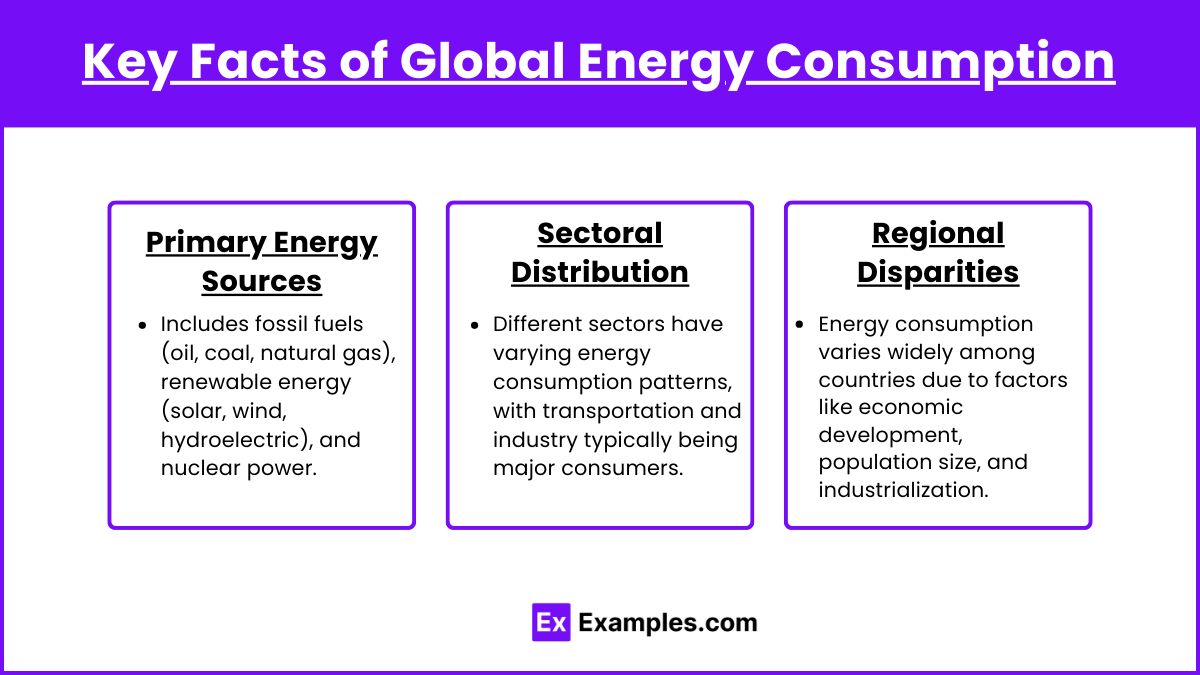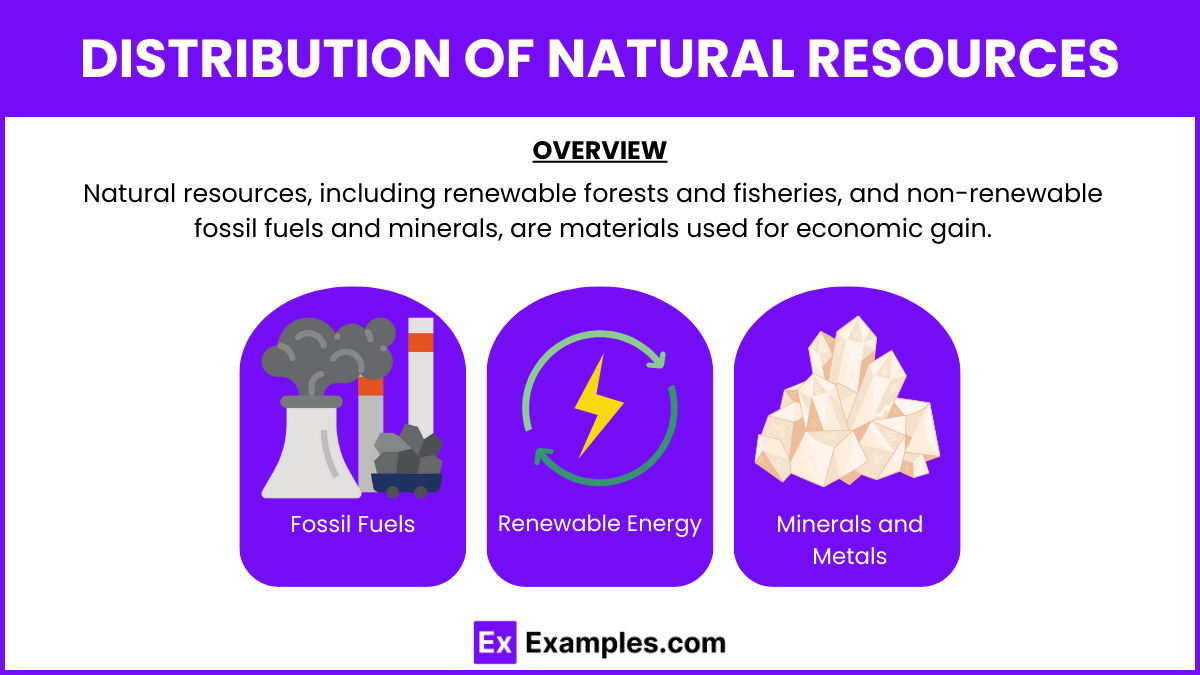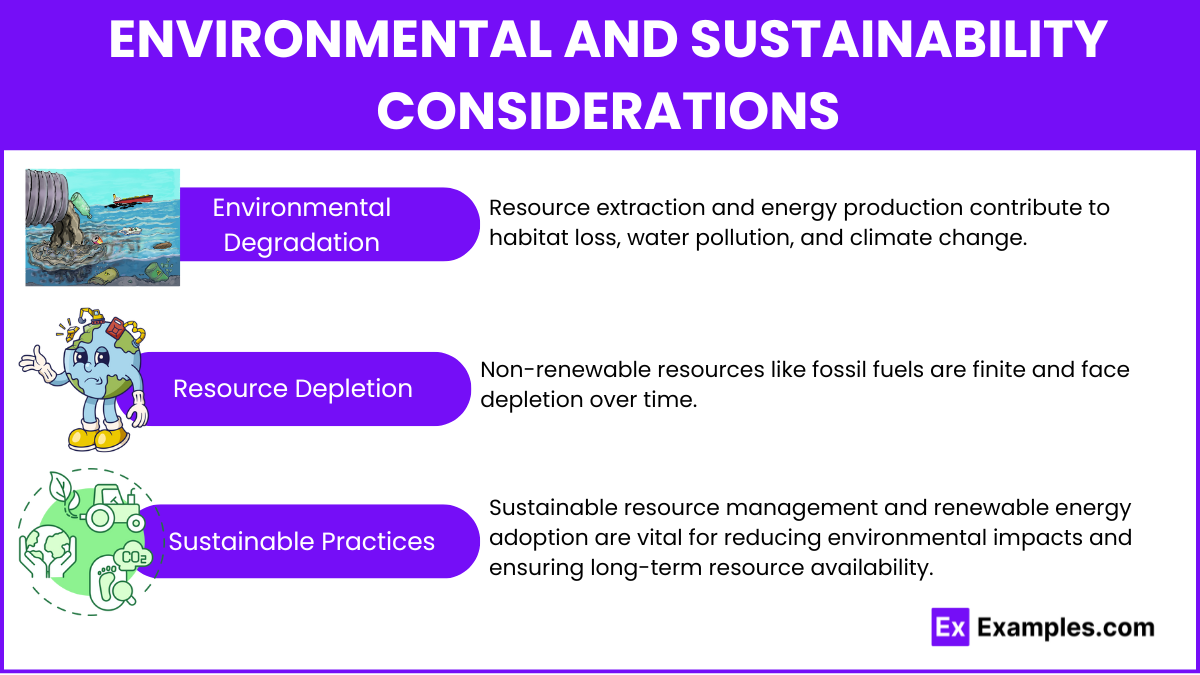In AP Environmental Studies, the exploration of global energy consumption and the distribution of natural resources is integral to understanding their profound impacts on ecology, ecosystems, biodiversity, and the biosphere. This topic delves into how human utilization of energy and extraction of resources affect natural habitats, species diversity, and the overall health of ecosystems worldwide. It emphasizes the interconnectedness between energy choices, resource availability, environmental sustainability, and human well-being, highlighting the importance of responsible resource management and renewable energy adoption to mitigate adverse ecological effects and promote a balanced coexistence with nature.
Learning Objectives
In AP Environmental Studies, learning objectives include analyzing global energy consumption and distribution of natural resources to understand their impacts on organisms, climate changes, and flora and fauna. Students will explore the ecological implications of energy extraction and resource exploitation on biodiversity and ecosystems. They will assess how resource distribution influences geopolitical dynamics, economic development, and environmental sustainability. Understanding these relationships helps in evaluating sustainable energy practices, mitigating habitat degradation, and addressing climate change through informed policy and conservation strategies.
Global Energy Consumption
Overview: Global energy consumption refers to the total energy used by countries and regions across the world to meet their energy demands. It encompasses various sectors such as transportation, industry, residential, and commercial.
Key Facts

- Primary Energy Sources: Includes fossil fuels (oil, coal, natural gas), renewable energy (solar, wind, hydroelectric), and nuclear power.
- Sectoral Distribution: Different sectors have varying energy consumption patterns, with transportation and industry typically being major consumers.
- Regional Disparities: Energy consumption varies widely among countries due to factors like economic development, population size, and industrialization.
Trends and Patterns:
- Growth: Global energy consumption has been steadily increasing, driven by population growth, urbanization, and industrial expansion.
- Shifts: There is a gradual shift towards cleaner and renewable energy sources due to concerns over climate change and environmental degradation.
- Challenges: Energy consumption patterns contribute to environmental issues such as air pollution, greenhouse gas emissions, and habitat destruction.
Distribution of Natural Resources

Overview: Natural resources are materials or substances found in the environment that are utilized for economic gain. They include renewable resources (forests, fisheries) and non-renewable resources (fossil fuels, minerals).
Key Resources
- Fossil Fuels: Concentrated in regions like the Middle East (oil), North America (coal, oil, natural gas), and Russia (natural gas).
- Renewable Energy: Distributed based on geographic features (solar in deserts, wind in coastal areas, hydroelectric in river basins).
- Minerals and Metals: Found in specific geological formations, leading to regional concentrations (e.g., iron ore in Australia, copper in Chile).
Implications:
- Economic Impact: Resource-rich countries often have economic advantages but may face challenges related to resource dependence and price volatility.
- Environmental Impact: Extraction and utilization of natural resources can lead to habitat destruction, pollution, and ecosystem degradation.
- Social Implications: Resource distribution can influence geopolitical relations, national security, and socio-economic development.
Environmental and Sustainability Considerations

Challenges:
- Environmental Degradation: Resource extraction and energy production contribute to habitat loss, water pollution, and climate change.
- Resource Depletion: Non-renewable resources like fossil fuels are finite and face depletion over time.
- Sustainable Practices: Promoting sustainable resource management and renewable energy adoption is critical for mitigating environmental impacts and ensuring long-term resource availability.


